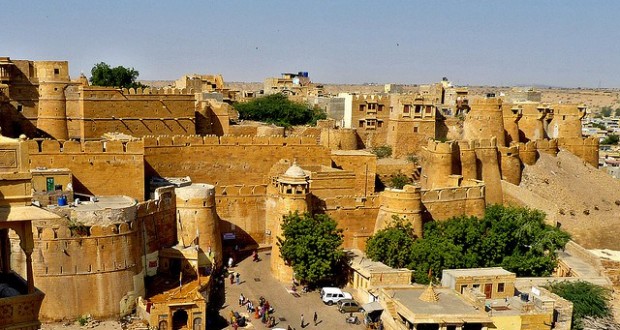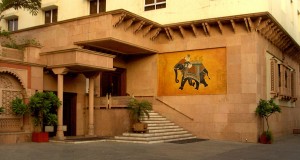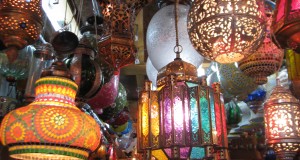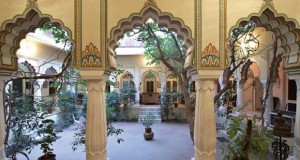Review Overview
Gadisar Tank-Fort-Jain Temples-Salim Singh Haveli-Patwon k i Haven- Nathmal ki Haveli
This tour is best done on foot, and in the cool of the morning. Set out around 7 am, taking a 15-minute stroll down Ashni Rd (from the fort entrance) to Gadisar Tank, just below the city walls to the south-west. This is the large natural oasis which lured jaisal to the site 855 years ago, and which was the city’s main sourced of water until the recent drought. Nowadays, it’s just a shallow depression in the surrounding desert, strewn with beached cenotaphs. While waiting for the planned pipeline to fill It with water again, enjoy the desolate atmosphere, the splen d id views of the battlemented fort from atop the temple roofs, and the beautiful arched gateway said to have been erected by Tilo, the famous prostitute. Her nemesis, the then Maharajah, threatened to knock this immoral structure down, until Tilo outwitt ed him by setting up a Krishna temple right next to it. Don’t leave without paying a v isit to Gadisar’s quaint little Folklore Museum. Open from 7 am to 12 noon, 3 pm to 7 pm daily (admission Rs2), this houses a curious assortment of fossils, dolls, coin s, ancient inscriptions, folklore artefacts, and ‘ceremonial toilet boxes’. While here, P ick up a copy of N.K. Sharma’s local guidebook (Rs15), full of useful information and amusing titbits:
Question: What is the ‘Great Indian Bustard of Jaisalmer’? Answer : ‘This is beautiful and extremely popular bird found over area Jaisalmer. It attains the height of 2 to 3 ft. Its neck is long like that of a camel. Which it moves side ways whi le walking. It is of grey colour. Its eyes shine like the eyes of a deer. Its voice is very sweet. It feeds on gravel. At the approach of the men it takes to flight. It’s a very sc arce bird found in the world.
A description of one of the world’s rarest birds, which breeds in the large (3162 sq km, 1225 sq miles) Desert National Park (45 km, 925 miles) to them south-west of Jaisalmer. From the museum, stroll up to the Gadisar Gate to re-enter them . %vaned city. The powerful fort within the city, perched on the Tricuta (three-peak) of antiquity, is also known as ‘Sonar Gila’ or Golden Fort because all its fortifications and reside al buildings are made of yellow-sandstone. Built over a period of 7 years (and much added to in the subsequent 700 years), its meandering, snakelike wall is buttre d by 99 bastions and corner towers. The unique feature in its construction is that hob mortar or cement was use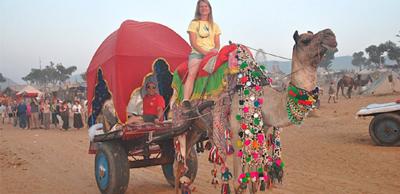 d to join the huge blocks of stone, only sand. It was cooly in the mid-18th century that the fort’s inhabitants began to come off the heights and settle on the downslope below. Over a century of flurried building ensued—ar . it was during this period that the wealthy city merchants formed their mohalla or guilds (after their clans and professions), laid their streets, and erected their imposing havelis (literally ‘big houses’). The fort was attacked many times during its long history, notably by the Tughlaqs and the Mughals, and was captured on at least ti ee occasions. Its walls bear the telltale scars of fireball and cannonball attack, and he battlements within are still littered with original cannon and stone balls. Red H. handprints at each of the gates are the sad legacy of doomed Rajput wives who went to join their husbands on the funeral pyres.
d to join the huge blocks of stone, only sand. It was cooly in the mid-18th century that the fort’s inhabitants began to come off the heights and settle on the downslope below. Over a century of flurried building ensued—ar . it was during this period that the wealthy city merchants formed their mohalla or guilds (after their clans and professions), laid their streets, and erected their imposing havelis (literally ‘big houses’). The fort was attacked many times during its long history, notably by the Tughlaqs and the Mughals, and was captured on at least ti ee occasions. Its walls bear the telltale scars of fireball and cannonball attack, and he battlements within are still littered with original cannon and stone balls. Red H. handprints at each of the gates are the sad legacy of doomed Rajput wives who went to join their husbands on the funeral pyres.
Just within the stout gateway, you’ll see the soaring 7-storey palace. Ascend the sloping stone ramp until—many twists and bends later—you come to the large open square in the centre of the old Castle Fort. At the top of the square is the Id Diwan-i-Am, a beautiful marble throne atop a high series of steps, from where He Maharajah used to hold open court with his subjects (no, you can’t sit on it). Beh id it, a low arched tunnel-gateway leads up to the Jain Temples. Open 7 am to noon daily, this highly decorative group of seven temples, constructed between the 1 th and 16th centuries, contain a total of 6666 images of the Jain tirthankars (prophets), mythological figures and gods. The carvings are uniformly magnificent. There a small library with a rare collection of miniature paintings, books and manuscript s. There’s also a priceless emerald statue of the Jain deity in the temple of Mahavir Swami. But it’s only open to view from 10 am to 11 am daily. Photos aren’t allowed in any of the temples, and all leather articles (including belts and bags) must be left at the entrance.
A short walk left out of the temple complex brings you to Dop Khana (‘place of cannon’), providing marvellous views down over Jaisalmer town. To the right of this rampart can be seen the fanciful Salim Singh Haveli. This palatial structure with is peacock-motif arched roof was built by the powerful late 18th-century prime minis er Salim Singh. A man of overweening ambition, he earned his notoriety by wiping cut two nearby villages (3000 people) in a single night. Then he set about buildin1 a house high enough to permit a bridge running across to the Fort itself, to give h m private access to the king’s ear. But his plans went awry, the other Rajput courtiers persuading the king to fire on Salim Singh’s high-rise havelis, blowing the top two levels clean away.
To see it at close range (excellent façade, disappointing interior), leave the fort a; id cross over the central market to the north part of town. Near the havelis you’ll also find the huge 19th-century Mandir Palace, with its beautiful silver furnishings. Joust north of this is the finest example of Jaisalmer architecture—the group of five ornate merchant’s houses collectively known as Patwon ki Haveli. Contracted by them wealthy jeweller Patwon for his five sons, and built between 1800 and 1860, thoy represent the finest achievement of Jaisalmer’s fastidious silavats or stone-carvers. Every pillar, bracket, window and balcony is an intricately carved masterpiece. The graceful filigreed windows in particular, remind one of the similar merchants’ houses. off Venice. From the top terraces, you have the best views of all—both of the yellowgold fort, and of the tiny medieval backstreets. Of the five havelis, three are now government-owned, and only two are open to the public (10.30 am to 5 pm daily). finish off with a visit to nearby Nathmal ki Haveli, built as a prime minister’s recidence in the late 19th century. 
The right and left wings of this beautiful house were carved separately by two Muslim brothers, yet exhibit only minimal .td Tohie ffruofnt edror r, deguanreded by a brace of elegant sandstonelephants, is a Torre. The first floor is magnificently painted. The archway of this 5-storey edifice presents the best views. Outside, explore the countless other mansions and houses dotted round town–every bend in the road turns up fresh delights! After a siesta, you’ll be ready for a ‘sunset experience’ at Sam Sand-Dunes, 40 km miles) west of Jaisalmer. Check out the sunrise/sunset timings at the tourist office, I arrange a jeep ride. Your hotel should handle this, and if you get a group together it should only cost about Rs50 per head. On the way to the dunes, stop off at Mool Sagar (7 km out of Jaisalmer) to see the Maharajah’s 15th-century country house. When not stricken by drought, this is a popular picnic spot with beautiful gardens. There is an interesting camel pulley on the (now bone-dry) deep well, and home nice carvings on the walls. At Sam Sand, take a camel onto the dunes, pick one with no noisy home tourists on it, meditate on oneness with the desert, and pray for a decent sunset.
RECREATION Iraditional Jaisalmeri music employs varying themes of maand (Rajasthani chamber music) songs, which are usually depressing. As a local guidebook explained: ‘When rains were over, the men went out along with their caravan for commercial purposes, leaving their better-halves behind who let out effusions of love in their separation. The variety of love-songs of separation are the glorious p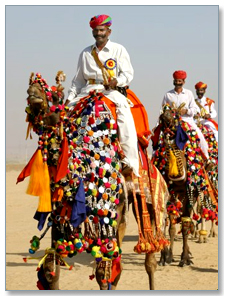 roofs thereof.’ Street musicians and camel drivers prefer cheery ghoomal (dancing) melodies or lung-bursting bharat chants, used by warriors of old to summon the terrible power of Durga before each battle. Several hotels lay on traditional folk-music shows, performed by the guild of fort musicians. They normally play for marriage ceremonies, but they play just as well for tourists.
roofs thereof.’ Street musicians and camel drivers prefer cheery ghoomal (dancing) melodies or lung-bursting bharat chants, used by warriors of old to summon the terrible power of Durga before each battle. Several hotels lay on traditional folk-music shows, performed by the guild of fort musicians. They normally play for marriage ceremonies, but they play just as well for tourists.
SHOPING Jaisalmeri produces more wool than any other Indian town. Together with two neighbouring Rajasthan townships—Bikaner and Barmer—it also produces perhaps the best-quality camel and sheep wool in India. The best buys, therefore, are woollen tarpets. Because they are locally produced (by skilled Mohammedan refugees who fled into India from Pakistan after the 1971 war, settling 150 km (94 miles) south of Jaisalmer, at Gadera, near Barmer) they are relatively inexpensive. The wool is gathered, sorted and spun in Jaisalmer, then sent to Gadera for weaving. The finished carpets return to Jaisalmer for sale. While the chance of getting an original carpet is pretty slim (patterns are generally copied from traditional designs, and the only real variations are those of colour), the quality of workmanship is quite high. At about Rs5000 a standard 5 x 7 ft (2.2 x 1.5 m) carpet (288 knots per sq in) is very good value. Shopping in Jaisalmer can be a hassle. There’s a lot of pressure on you to buy, and prices are hiked up depending on how dumb you look. The golden rule still applies: don’t accept any recommendations from hotel owners or street touts. They are all helping themselves, not you.
If you can face the heat, April-May is the best shopping season—there are few tourists about, and even hardened traders are forced to drop their prices. A good year-round shop is Damoder Handicrafts up in the fort (near 4th gate). Bargain hard here for wall-hangings, bedsheets, embroidery, paintings and leather goods at rock-bottom prices. To see the complete range of Jaisalmeri produce—Mughal-design carpets (a mix of Australian and Gadera wool), pastel woollen dhurries, mirrored wall-hangings and beautiful cushion-covers—check out Jaisalmer Rugs ‘n’ Arts, inside Chirriya Haveli, near Patwon ki Haveli. For now, its prices are very competitive indeed. Similar fair play is to be had at Kamal Handicrafts Emporium, near the Jain temples in the fort, famous for its embroidery items from Barmer.
A lot of the hand-embroidered crafts sold in Pushkar, Jaipur and even Delhi originate from Barmer—where they were traditionally produced as heritage items handed down from father to son, or as marriage gifts. Jaisalmer’s sprawling Bhatia Market runs all the way down from the fort entrance to the State Bank of India. Here you can buy just about anything—cool kurta-pajamas (from Khadi Gramodyog, near July 8th Restaurant), good, cheap silver (from KrishnaJewellers, near Kalpana restaurant), patterned mojaris or desert slippers (from Vijay Leat herwork, Ashni Rd), bright 14-m (45-ft) turbans, handy for lowering down water-wells , or for covering you rself in sandstorms—thei r traditional desert use), and huge 7-m (23-ft) gathered skirts.
WHERE TO STAY
Expensive/Mid-range (US$10-35/Rs250-1000 per room night) Jaisalmer now has a staggering total of 42 hotels—all but two of which are aimed at the budget traveller. Until the Taj and Oberoi set up shop, the only comfy option is Narayan Niwas Palace (tel 2408) with cool air-conditioned rooms at Rs700 single, Rs950 double. It’s a converted caravanserai at the foot of town (near State Bank of India), with friendly family atmosphere and good food. Princess Anne once stayed here, and (if you believe the staff) she has already entered the pantheon of minor Hindu deities. The new Heritage Inn on Sam Road has rooms from Rs1200 upwards. The other place with air-conditioned rooms (Rs355 single, Rs400 double) is the gloomy Moomal Tourist Bungalow (tel 2492, 2392). The cheaper village-style huts (Rs1200 ) are unbearably stuffy. The Himmatgarh Palace, 1 Ramgarh Road (tel 2213) and Jawahar Niwas Palace (tel 2208) are two mid-range hotels with all basic services but in need of renovation.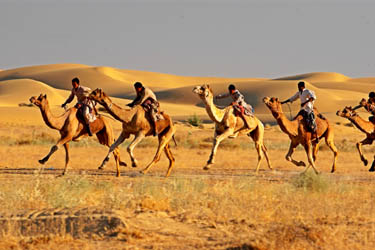
Budget (under US$10/Rs250 per room night) Jaisalmer’s reputation for personalised hospitality comes into its own in the budget lodges. Most of these make a point of reserving train tickets back to Jodhpur for you, regardless of whether or not you take their camel-trek. Rooms are generally spartan, but there’s often good information, free guide services, a sun-roof (with views), and as much of the delicious local tea as you can drink.
A few of the better ones are Fort View Hotel (tel 2214) near the fort entrance, good information, overseas calls service, and superb views of the fort; Hotel Pleasure, opposite State Bank of India, with an informative manager, family atmosphere; nearby S wastika Guest House, with clean, comfortable rooms, cheap dorm beds. Many people prefer to stay up in the Fort itself. It’s cooler and quieter, and the views are just as good looking down as they are looking up. Shop around before taking a room though—old favourites like Jaisal Castle Inn (tel 2362, on the fort ramparts) have suffered badly from over-publicity, while new finds are coming up all the time. Best of the current crop is Hotel Paradise (tel 2569), originally the home tot the Maharajah’s family. The breezy sun-roof gives views of the main royal palaces to the north, while many rooms have the south-facing views over the town and desert (asks for No. 105). There’s even a 24-hour chilled beer service.
Finally , for a rare opportunity to stay in a Prime Minister’s have , check out Shree Nath Palace Hotel, situated in the oldest part of the fort. This is a 600-year-old house, with first-rate views of the Jain temples from the roof, and very cheap. staying here is a real experience.

